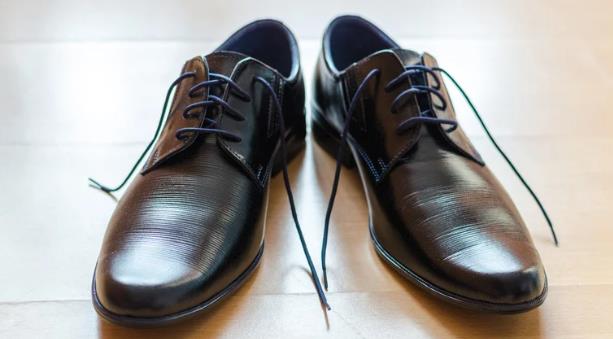Lacing dress shoes properly is an essential skill that goes beyond mere aesthetics; it impacts both the fit and the comfort of your shoes, as well as the impression you make in professional and formal settings. “How to Lace Dress Shoes” can subtly enhance your overall appearance, complementing the sophistication of your attire.
When approaching shoe lacing, it’s crucial to consider the type of shoe and the context in which it will be worn. Whether for business meetings, formal events, or daily office wear, the correct lacing technique can add a polished touch to your ensemble while ensuring your shoes fit securely and comfortably.
Let’s explore various lacing methods that improve the functionality and longevity of your dress shoes and elevate your style quotient. From straight bar lacing to more intricate designs like ladder lacing, each method has its own benefits and suitable occasions. Understanding these options will allow you to choose the best lacing style for your needs, ensuring that your dress shoes always look impeccable and feel great.
How to Lace Dress Shoes
1. Straight Bar Lacing
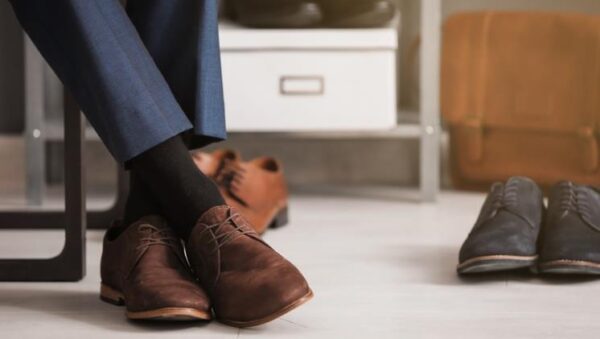
Straight bar lacing, also known as bar lacing, is a popular method for lacing dress shoes because it offers a clean, uninterrupted look that is perfect for formal occasions. This technique works best on shoes with an even number of eyelet pairs and is particularly suited for oxford shoes, enhancing their sleek design.
Here’s how to lace your dress shoes using the straight bar lacing method:
- Start Evenly: Begin by feeding the lace horizontally through the bottom eyelets from the outside in, ensuring that both lace ends are even.
- Alternate Sides: Take the left lace and run it vertically on the inside up to the next available eyelet on the same side. Pull it through to the outside.
- Cross Over: Bring the lace straight across to the opposite side and thread it through the eyelet.
- Repeat on the Right: Do the same with the right lace, moving vertically on the inside up to the next eyelet, then crossing over horizontally.
- Continue Pattern: Continue this pattern of alternating vertical and horizontal passes with each lace until you reach the top eyelets.
- Secure the Lace: Once at the top, ensure the laces are snug but not overly tight to maintain the straight bar appearance across the shoe.
Benefits of Straight Bar Lacing:
- Aesthetic Appeal: Provides a neat and orderly appearance that complements formal wear.
- Comfort: Reduces bunching of the shoe upper, offering a comfortable fit around the foot.
- Ease of Tightening: While not the quickest for tightening, it allows for even adjustment along the entire lacing system.
Straight bar lacing not only secures your shoes effectively but also aligns with the elegance expected in formal settings, making it a go-to choice for many looking to polish their professional appearance.
For Your Better Understanding check this out: https://youtu.be/8DkCoG6n8vk?si=ij6Y1X3ca1SBC4jx
2. Criss Cross Lacing
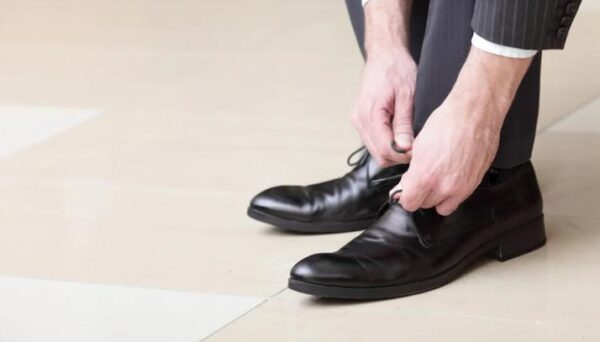
Criss Cross Lacing is one of the most common and versatile methods for lacing dress shoes. It provides excellent support and adjusts easily to the shape of the foot, making it ideal for a variety of shoe styles, including derbies and less formal oxfords.
Here’s how to lace your dress shoes using the Criss Cross lacing method:
- Start at the Bottom: Insert the lace into the bottom eyelets from the outside, ensuring both ends are equal in length.
- Cross the Laces: Take the left lace and cross it over to the right, threading it from the outside through the next eyelet up on the right side. Repeat with the right lace, crossing it over to the left side and threading it from the outside in through the corresponding eyelet.
- Continue Alternating: Alternate crossing the laces and moving up the shoe until you reach the top eyelets.
- Final Adjustment: Adjust the laces to ensure they are snug but not too tight, allowing for comfortable movement without distorting the shape of the shoe.
Benefits of Criss Cross Lacing:
- Fit Flexibility: Easily adjusts to the width of the foot, accommodating wider or narrower feet comfortably.
- Even Tension: Distributes tension evenly across the foot, reducing pressure points and enhancing comfort.
- Quick and Easy: This method is straightforward to execute and quick to tighten, making it practical for everyday use.
For Your Reference: https://youtu.be/BhhKbUoAWro?si=Y5svM4-ypIDslhbN
3. European Bar Lacing (Straight European Lacing)
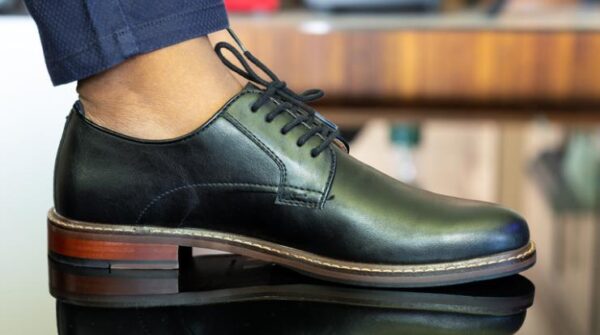
European Bar Lacing, also known as Straight European Lacing, is a refined method that combines elegance with a secure fit, making it ideal for high-end dress shoes, particularly those with a higher number of eyelet pairs. This lacing style is distinguished by its straight horizontal bars on the outside and diagonal lace segments on the inside, providing a sleek and sophisticated appearance.
Here’s how to lace your dress shoes using the European Bar Lacing method:
- Start from the Bottom: Insert the lace horizontally through the bottom eyelets from the outside, leaving an equal length on both sides.
- Begin Lacing: Take the left lace and run it vertically up on the inside and out through the next higher eyelet on the same side.
- Cross Over: Take the right lace and cross it diagonally on the inside, then bring it up through the eyelet directly above the left lace you just threaded.
- Alternate the Process: Continue with the left lace, crossing it diagonally on the inside and bringing it out through the next higher right eyelet. Repeat this step alternately with each lace until you reach the top eyelets.
- Final Adjustments: Make sure that the horizontal bars on the outside remain straight and neat. Adjust the tension as needed for comfort without distorting the shoe’s shape.
Benefits of European Bar Lacing:
- Aesthetic Appeal: Provides a clean and continuous horizontal look that is visually appealing, especially on dress shoes with a polished finish.
- Secure Fit: Offers a tight and secure fit, as the diagonal internal segments hold the shoe snugly against the foot.
- Reduced Wear and Tear: The lacing reduces friction on the eyelets and the upper, prolonging the life of the shoe.
Video URL: https://youtu.be/9VQdXd6gtYk?si=k2woYXDHH3tv5UMI
4. Diagonal Lacing
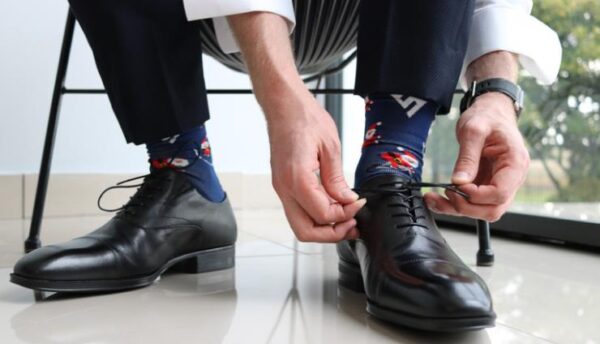
Diagonal Lacing is an eye-catching method that adds a distinctive twist to traditional dress shoe styles. This lacing technique creates a diagonal pattern across the shoe, offering a unique look that can set you apart in formal and business casual settings alike.
Here’s how to lace your dress shoes using the Diagonal Lacing method:
- Starting Position: Begin by threading the lace through the bottom eyelets from the outside to the inside, ensuring both ends are even.
- Create the Base: Take the left end of the lace and insert it vertically up into the next eyelet on the same side, then pull it out. Do the same with the right end, keeping the lace flat and neat.
- Form the Diagonals: Cross the left lace over to the opposite side, skipping one eyelet and threading it from the outside through the next available eyelet up on the right side. Repeat this with the right lace, crossing it over to the left side in a similar manner, skipping one eyelet.
- Continue the Pattern: Continue this crisscrossing pattern, each time skipping one eyelet before threading the lace through on the opposite side. This creates a bold diagonal stripe across the shoe.
- Finish at the Top: When you reach the top eyelets, you might find that one side has an extra eyelet if your shoes have an odd number of eyelet pairs. Simply run the lace up on the inside to the last eyelet to maintain the pattern’s integrity.
Benefits of Diagonal Lacing:
- Visual Interest: Adds a striking and original aesthetic to your dress shoes, making them stand out.
- Custom Fit: Allows for slight adjustments in tightness across different parts of the foot, providing a customized fit.
- Versatility: Works well with various types of shoes, including those with a high number of eyelets, enhancing both casual and formal footwear.
Video is better than words: https://youtu.be/76n9KMh-hkI?si=7o7KswToz7NT-Xm0
5. Ladder Lacing
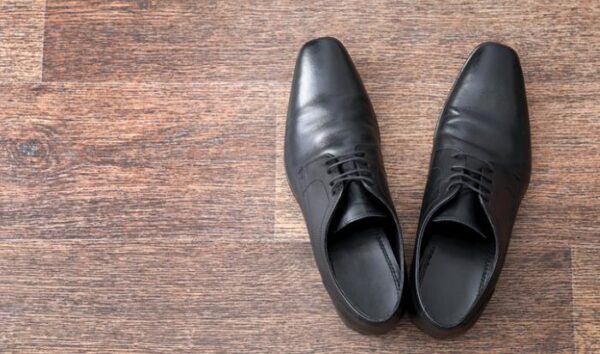
Ladder Lacing is a robust and intricate method that not only adds a visually appealing structure to your dress shoes but also ensures the laces are tightly secured. This technique is especially favored for its practical and decorative appeal, often seen on military and ceremonial shoes but equally suitable for adding a touch of sophistication to dress shoes.
Here’s how to lace your dress shoes using the Ladder Lacing method:
- Start at the Bottom: Begin by running the lace horizontally through the bottom eyelets from the outside to the inside, ensuring both ends are even.
- Vertical Segments: Take both ends of the laces and run them straight up on the inside to the next set of eyelets, then pull them through to the outside.
- Create the First Rung of the Ladder: Cross the laces horizontally over the outside and thread them through the opposite eyelets.
- Build the Ladder: After creating the first horizontal bar, run each end of the lace vertically up the inside again to the next set of eyelets and out. Cross them over to form the next rung and continue this pattern up the shoe.
- Finish at the Top: When you reach the top eyelets, you can secure the lace ends by tying a traditional bow or tucking the excess lace inside the shoe for a neat finish.
Benefits of Ladder Lacing:
- Support and Stability: Provides excellent support and prevents the shoe from becoming loose, as the laces are secured at multiple points.
- Aesthetic Appeal: The ladder-like appearance adds a unique and meticulous detail to the shoe, enhancing its formal look.
- Durability: The lacing technique distributes tension evenly across the upper, reducing wear and stress on the eyelets.
Video URL: https://youtu.be/9wAirVPih1k?si=sbC0v757jJbwb3G1
6. Bow Tie Lacing
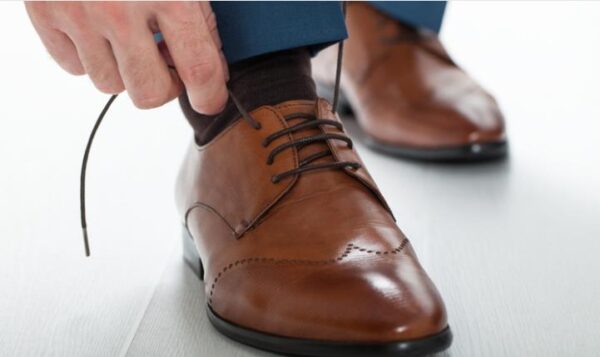
Bow Tie Lacing is an artistic and decorative lacing technique that adds a playful yet sophisticated touch to dress shoes. It creates a bow-tie-like pattern across the front of the shoes, making it a standout choice for special occasions or when you want to make a fashion statement.
Here’s how to lace your dress shoes using the Bow Tie Lacing method:
- Start at the Bottom: Insert the lace horizontally through the bottom eyelets from the outside in, ensuring the ends are even.
- Form the First Bow Tie: Take one lace and skip an eyelet, threading it up on the inside and out through the third eyelet. Cross it over to the opposite side, skipping back down to the eyelet you initially skipped (now threading from the outside in), creating a downward loop. Then, bring it up on the same side to continue.
- Mirror the Pattern on the Other Side: Repeat the same pattern with the other lace, but start by moving it up to the second eyelet instead of skipping to the third. Continue the pattern to create symmetrical bow-tie shapes across the shoe.
- Continue up the Shoe: Alternate the starting points with each set of eyelets, maintaining the bow-tie pattern until you reach the top.
- Secure at the Top: Finish by running the laces straight up to the top eyelets from the inside and tie off with a neat, balanced bow to maintain aesthetic continuity.
Benefits of Bow Tie Lacing:
- Visual Appeal: This method offers a unique and eye-catching design that can turn an ordinary pair of dress shoes into a conversation piece.
- Customization: Allows for personal expression through your footwear, perfect for events where you want to showcase your individual style.
- Versatility: While distinctive, the lacing can be paired with various shoe types and styles, from more casual dress shoes to formal wear.
Video for you: https://youtu.be/57MB3z18dTs?si=t7sNL0JUrQaGv3fl
FAQs on Lacing Dress Shoes
Is there a specific way to lace dress shoes?
Yes, there are different lacing methods for dress shoes. The most common is the straight bar lacing, but there are also methods like criss-cross lacing and ladder lacing.
How are dress shoes supposed to be tied?
Dress shoes are typically tied using a standard bow knot. The knot should be tight enough to secure the shoe but loose enough to allow for easy removal.
Should dress shoes be straight laced?
Straight bar lacing is a common method for dress shoes, but it’s not the only option. The choice of lacing style depends on personal preference and the look you want to achieve.
What is the proper way to lace shoes?
The proper way to lace shoes depends on the type of shoe and the desired look. However, in general, the laces should be threaded through the eyelets from the bottom up, with the ends of the laces even on both sides.
How do you tie dressing shoes?
To tie dress shoes, start by threading the laces through the bottom set of eyelets, ensuring the ends are even. Cross the laces over and feed them under the sides, then pull them up and cross them over again. Finally, loop one lace around the other and pull tight to form a bow.
How to tie dress shoes to hide laces?
To hide the laces on dress shoes, you can use a hidden knot technique. After tying the laces in a standard bow knot, tuck the ends of the laces under the sides of the shoe before tucking them into the shoe. This will keep the laces hidden and give a clean look to the shoe.

